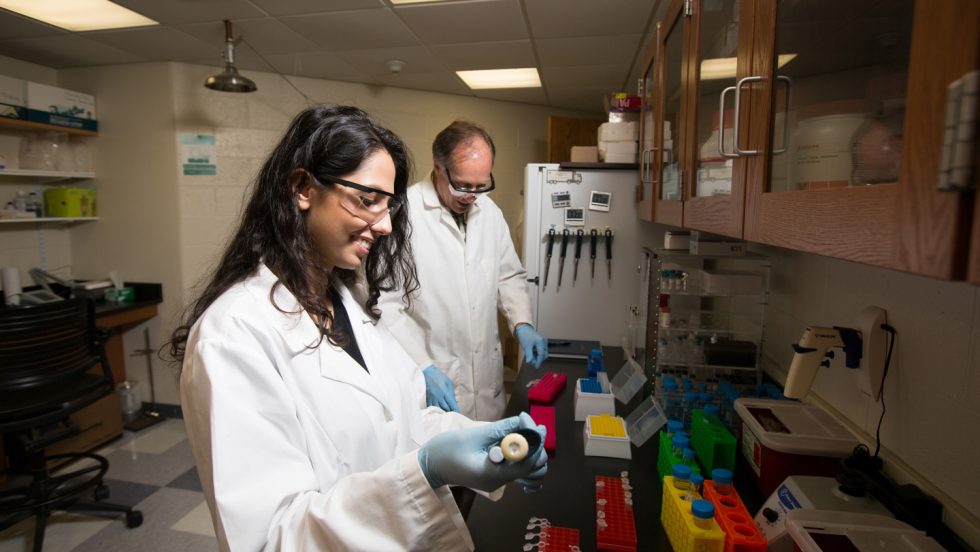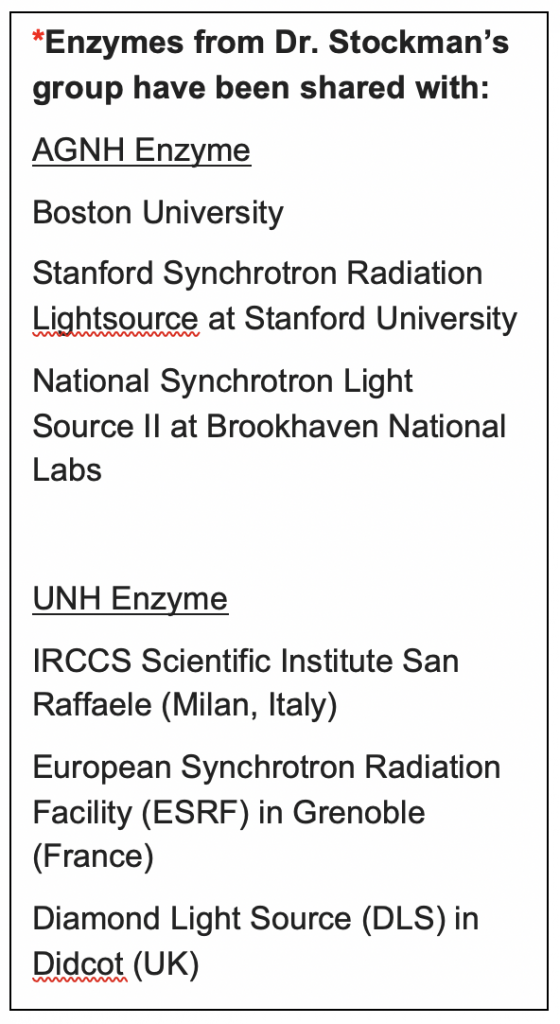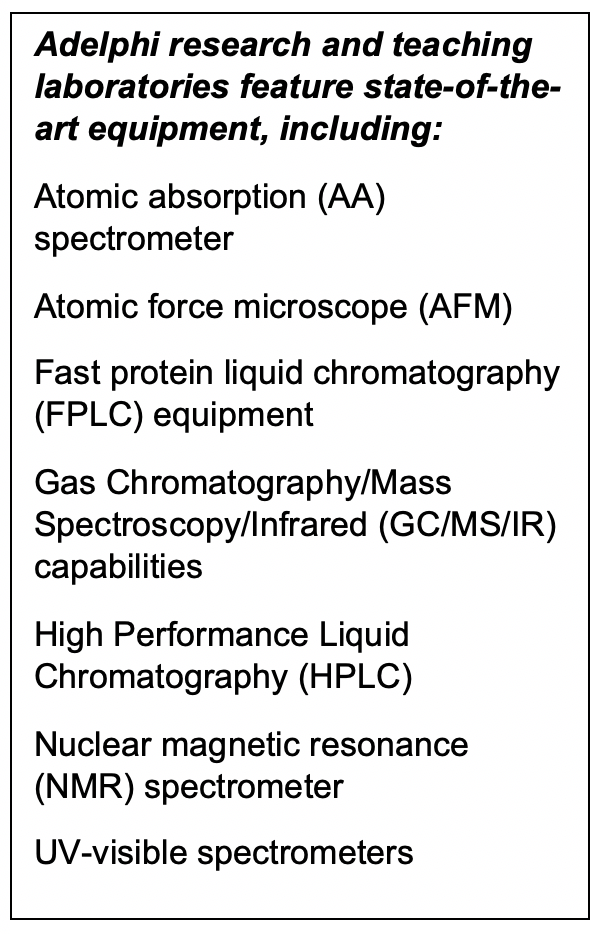
When Brian Stockman, PhD, became a professor of chemistry at Adelphi University after 18 years in pharmaceutical research and development, his research didn’t miss a beat. In the well-equipped labs on Adelphi’s Garden City campus, Dr. Stockman studies trichomoniasis, the most prevalent nonviral sexually transmitted disease, together with the students he teaches and mentors.
Dr. Stockman, chair of the Department of Chemistry at Adelphi, uses cutting-edge biochemistry methods and technology to explore potential targets for the design of “smart drugs” to treat trichomoniasis. But the purpose of the research is twofold: It is also designed to teach students about the techniques, tools and critical thinking necessary to become scientists. Dr. Stockman and his students, along with Adelphi collaborator Melissa Van Alstine-Parris, PhD, associate professor of chemistry, and her students, are unlocking the mysteries of the disease and developing compounds that could block the functions of specific trichomoniasis enzymes.
Recently, under Dr. Stockman’s mentorship, a group of undergraduate students purified approximately 50 milligrams each of two enzymes produced by the parasite that causes trichomoniasis: AGNH (adenosine/guanosine preferring nucleoside ribohydrolase) and UNH (uridine nucleoside ribohydrolase).
The students used Adelphi’s fast protein liquid chromatography (FPLC) equipment, which is one of many pieces of sophisticated scientific equipment that the University has to support research and teaching.
The enzymes that Dr. Stockman’s students purified were sent to the labs of several collaborators, including Karen Allen, PhD, professor and chair of chemistry at Boston University, and Massimo Degano, PhD, group leader of the Biocrystallography Unit at the I.R.C.C.S. Ospedale Scientific Institute San Raffaele in Milan, Italy. In these labs, scientists crystallized the purified enzymes—the second step in a field of science known as X-ray crystallography. The graduate student working on the project in Dr. Allen’s lab, Samantha Muellers ’17, carried out undergraduate research in Dr. Stockman’s lab at Adelphi before joining the PhD program at Boston University.
 After the enzymes purified by Dr. Stockman and his students are crystalized, they undergo a process that generates diffraction patterns resulting from X-ray waves passing through the crystals. These patterns help X-ray crystallographers determine the atomic structure of the molecules. Colleagues from around the world are involved in this process.*
After the enzymes purified by Dr. Stockman and his students are crystalized, they undergo a process that generates diffraction patterns resulting from X-ray waves passing through the crystals. These patterns help X-ray crystallographers determine the atomic structure of the molecules. Colleagues from around the world are involved in this process.*
Once the three-dimensional (3D) structures of the molecules are solved, the structural data is shared back to Adelphi, where Dr. Van Alstine-Parris and her students work on designing relevant enzyme inhibitors. They are using methods including molecular modeling, and they measure the enzymatic activity using tools including nuclear magnetic resonance (NMR) spectroscopy. The group also uses NMR to confirm the structure of the new molecules they create.
“NMR spectroscopy enables researchers to monitor reactions between enzymes and other molecules,” said Dr. Van Alstine-Parris. “Students’ use of this instrument, and their training in interpreting and presenting data, all contribute tremendously to preparing them for careers in the sciences.”
“Adelphi is known for providing hands-on research experiences for students in well-equipped science labs with state-of-the-art equipment,” said Dr. Stockman. “Because we have these excellent facilities for faculty research and teaching, we can give students the opportunity to learn real-world skills in scientific research.” Student research is often recognized by being listed as a co-author on peer-reviewed publications, an achievement accomplished three times by Samantha Muellers during her Adelphi career.
 This collaboration between Dr. Stockman, Dr. Van Alstine-Parris and their students and external collaborators is aimed at developing a treatment for trichomoniasis. The infection itself is often asymptomatic, but its presence can lead to compromised immunity and increased susceptibility to other conditions, such as cervical cancer, HIV-1 and prostate cancer.
This collaboration between Dr. Stockman, Dr. Van Alstine-Parris and their students and external collaborators is aimed at developing a treatment for trichomoniasis. The infection itself is often asymptomatic, but its presence can lead to compromised immunity and increased susceptibility to other conditions, such as cervical cancer, HIV-1 and prostate cancer.
Students of Dr. Stockman and Dr. Van Alstine-Parris have presented their research results at numerous national scientific conferences. The combination of experiential learning through research, training on high-tech laboratory equipment and scientific presentation skills gives these students a distinct advantage when they later explore graduate school and job opportunities.
This work was funded in part by the National Institute of Allergy and Infectious Diseases of the National Institutes of Health under Award Number R15AI128585. The content is solely the responsibility of the authors and does not necessarily represent the official views of the National Institutes of Health.